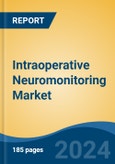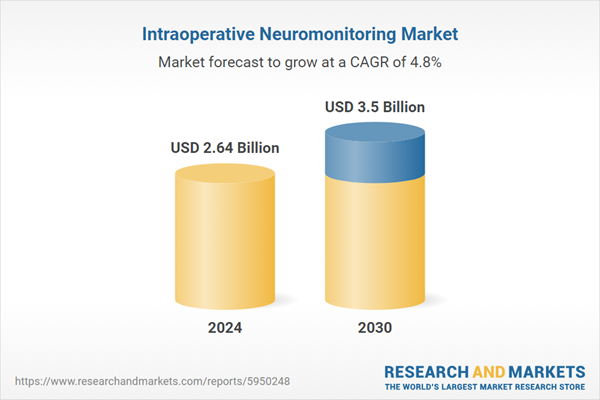Outsourced is the fastest growing segment, Asia-Pacific is the largest regional market
Speak directly to the analyst to clarify any post sales queries you may have.
10% Free customizationThis report comes with 10% free customization, enabling you to add data that meets your specific business needs.
Key Market Drivers
The increasing emphasis on patient safety and surgical efficacy stands as a primary catalyst for the global intraoperative neuromonitoring market. Healthcare providers are continuously seeking advanced methods to mitigate risks and improve functional outcomes during surgical interventions, particularly those involving delicate neural structures. Intraoperative neuromonitoring offers real-time feedback on nerve integrity, enabling surgeons to make immediate adjustments and prevent potential neurological damage. This capability directly supports the overarching goal of reducing morbidity and enhancing recovery, thereby becoming an indispensable component in modern operating theatersKey Market Challenges
A significant impediment to the growth of the global intraoperative neuromonitoring market stems from the substantial initial investment required for IONM equipment. This high capital expenditure can restrict broader adoption, particularly for healthcare facilities with limited budgets or those in emerging markets. Compounding this challenge is the essential demand for highly specialized training among monitoring professionals. The complexity of IONM procedures necessitates a limited pool of experts capable of accurate data interpretation and real-time surgical guidance. This specialized skill set involves extensive training and certification processes.Key Market Trends
The increasing integration of artificial intelligence and machine learning represents a significant market trend, enhancing the analytical capabilities and predictive accuracy of intraoperative neuromonitoring. These advanced computational techniques process vast amounts of neurophysiological data in real time, aiding clinicians in faster interpretation and the identification of subtle changes that may indicate neural compromise. The application of AI algorithms aims to refine warning criteria, reduce false positives, and provide more precise guidance to surgical teams during complex procedures.Key Market Players Profiled:
- Natus Medical Inc
- Accurate Monitoring LLC
- Neuro Monitoring Technologies Inc
- Medtronic PLC
- NuVasive Inc
- SpecialtyCare Inc
Report Scope:
In this report, the Global Intraoperative Neuromonitoring Market has been segmented into the following categories:By Type:
- Insourced
- Outsourced
By Region:
- North America
- Europe
- Asia-Pacific
- South America
- Middle East & Africa
Competitive Landscape
Company Profiles: Detailed analysis of the major companies present in the Global Intraoperative Neuromonitoring Market.Available Customizations:
With the given market data, the publisher offers customizations according to a company's specific needs. The following customization options are available for the report.Company Information
- Detailed analysis and profiling of additional market players (up to five).
This product will be delivered within 1-3 business days.
Table of Contents
Companies Mentioned
The companies profiled in this Intraoperative Neuromonitoring market report include:- Natus Medical Inc
- Accurate Monitoring LLC
- Neuro Monitoring Technologies Inc
- Medtronic PLC
- NuVasive Inc
- SpecialtyCare Inc
Table Information
| Report Attribute | Details |
|---|---|
| No. of Pages | 185 |
| Published | November 2025 |
| Forecast Period | 2024 - 2030 |
| Estimated Market Value ( USD | $ 2.64 Billion |
| Forecasted Market Value ( USD | $ 3.5 Billion |
| Compound Annual Growth Rate | 4.8% |
| Regions Covered | Global |
| No. of Companies Mentioned | 7 |









